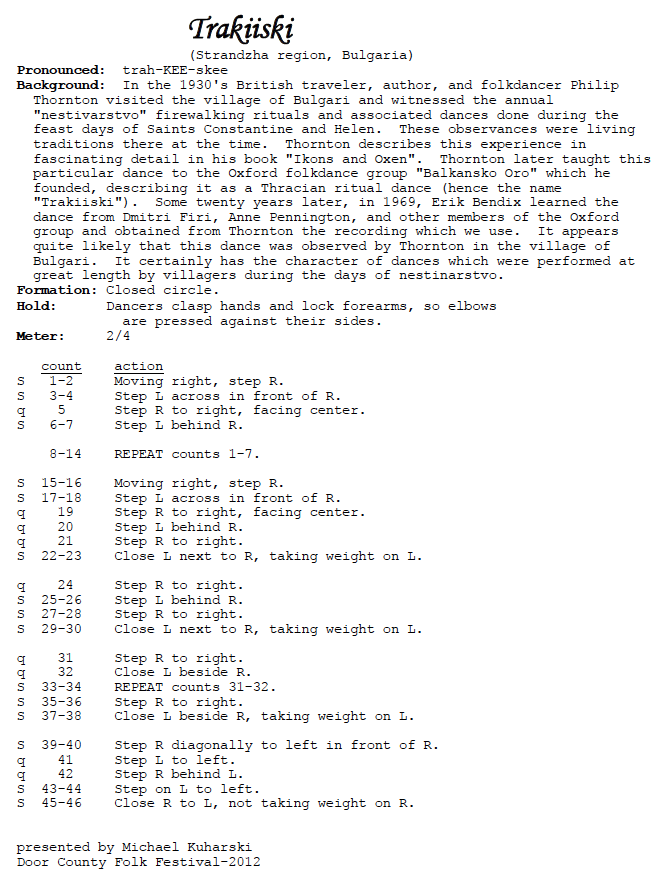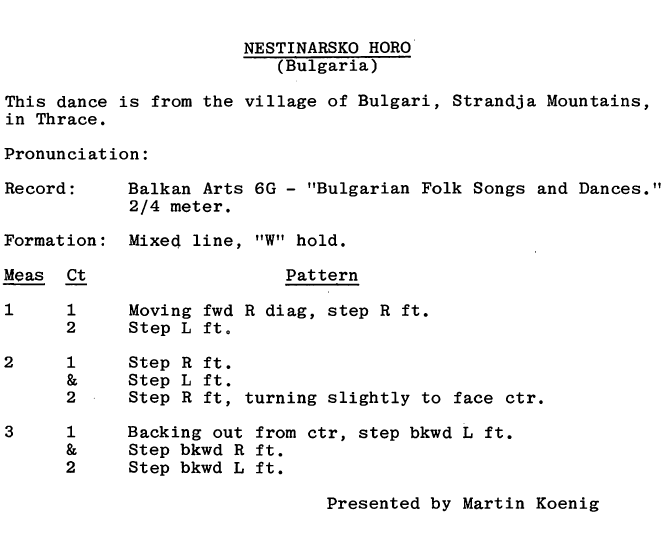*1st Generation dance. A dance that developed in a traditional way – not ‘taught’ by a teacher or choreographer, but ‘learned’ by observing and imitating others in your “village”, where the village’s few dances were the only dances anyone knew. It usually is ‘generic’ – the dance pattern is fairly simple and not tied to any particular piece of music. The dance phrase may or may not match any musical phrase, but the music’s rhythm must be suitable for performing the footwork. This dance may have many variations, but they’re performed at the whim or inspiration of the leader or (sometimes) any other dancer so long as it doesn’t interfere with the flow of neighboring dancers. For more, click here, here, and here.
See also Fire-Walkers – Greece & Bulgaria under CULTURE>Special Occasions
See also Anastenaria under DANCE>3b.1st GENERATION DANCES
Dances are associated with the Nestinarstvo fire-walking festival commonly held on the feast of Saints Constantine and Helena, May 21 (Western calendar ) or June 3 (Orthodox calendar.) The Nestinarstvo seen in today’s Bulgaria is a recreation for tourists – missing much of the mystical fervour of the original.
Although dance is only a small part of the ritual, there are 3 separate melodies, each with its own footwork. Various instructors have released notes on parts of the ceremony – usually the first processional dance that takes participants from the chapel containing icons to and around the ritual fire. The best-known Nestinari dance among recreational folk dancers is probably Yves Moreau’s

Here’s another, based on Phillip Thorton’s observations from the 1930’s
And Martin Koenig, 1983, Stockton.

